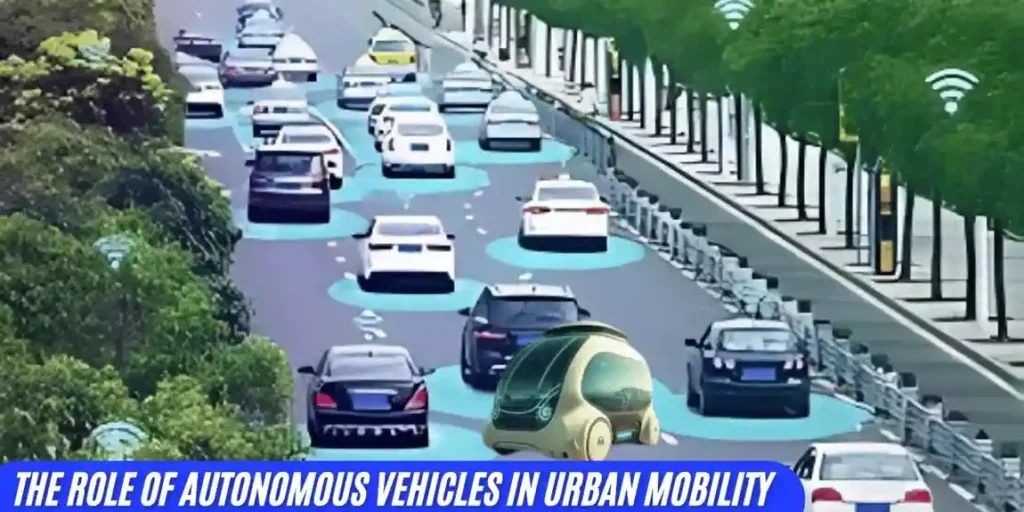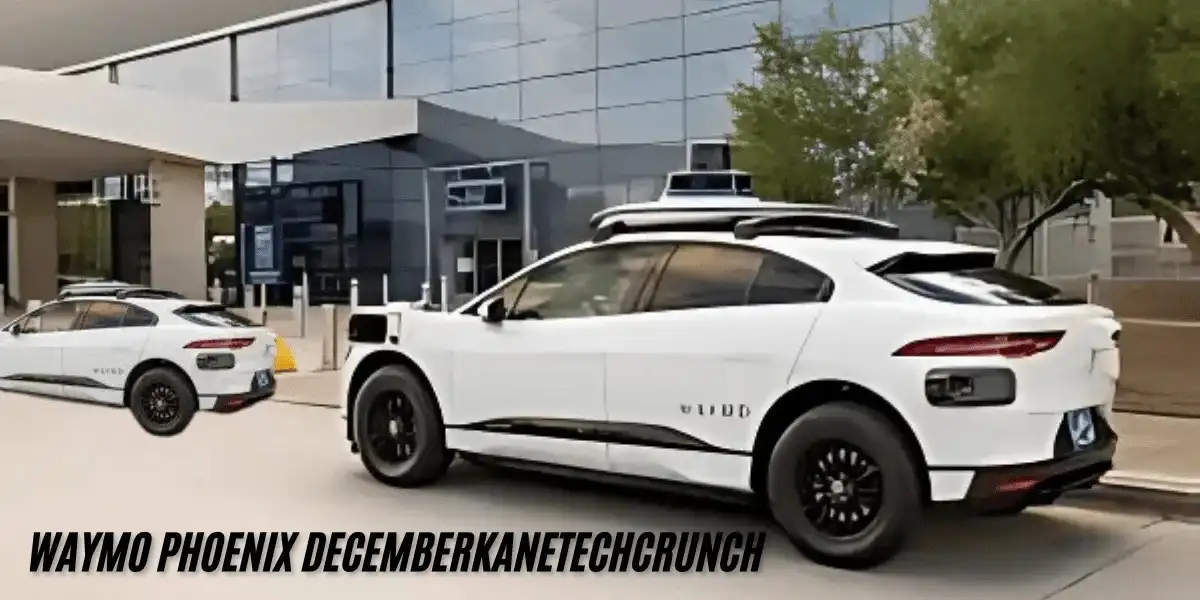Waymo, the self-driving car company and a subsidiary of Alphabet (Google’s parent company), is taking significant strides in expanding its autonomous vehicle services. As the company continues to scale its operations, Waymo Phoenix Decemberkanetechcrunch has become a hot topic in tech and autonomous vehicle circles. With ambitious plans to scale up its operations in Phoenix by December, Waymo is poised to redefine urban mobility. This article explores the potential impact of Waymo’s expansion in Phoenix, why it matters, and how KANE TechCrunch is breaking down the significance of this move for the future of autonomous vehicles.
The Road to Autonomous Vehicles: A Brief Overview of Waymo
Waymo has been at the forefront of autonomous vehicle technology for several years. Originally launched in 2009 as Google’s self-driving car project, it evolved into Waymo in 2016, with the mission of creating self-driving technology that is safe, efficient, and scalable. Over the years, Waymo has conducted extensive testing on autonomous vehicles, gathering billions of miles of real-world driving data and refining its technology.
The company has made significant strides, from launching its fully autonomous ride-hailing service in Phoenix to expanding its fleet and reaching new milestones in vehicle autonomy. Waymo Phoenix Decemberkanetechcrunch reports indicate that the company’s expansion plans for the end of this year are a key step in solidifying its dominance in the autonomous vehicle market.
Waymo’s Expansion in Phoenix: What’s Happening in December?
In December, Waymo Phoenix is set to undergo a major shift in operations. According to KANE TechCrunch, the company is significantly expanding its autonomous ride-hailing service in the Phoenix metro area. This move is expected to increase the number of vehicles on the road, introduce new service offerings, and extend Waymo’s reach within the Phoenix area.
Phoenix has long been a testing ground for Waymo, as it is one of the first cities where the company launched its fully driverless vehicles in public trials. The city’s relatively mild weather and extensive urban sprawl make it an ideal location for Waymo to push the boundaries of autonomous vehicle technology. In December, the company plans to roll out an expanded fleet of vehicles and refine its operational capabilities to accommodate more passengers and reach a broader audience.
This move will not only enhance the availability of self-driving vehicles but also push the company closer to achieving its goal of scaling its services beyond pilot projects into mainstream commercial operations. Waymo Phoenix Decemberkanetechcrunch reports that the service is expected to be fully operational for public use by the end of the year, marking a key milestone in Waymo’s long-term strategy.
The Role of Autonomous Vehicles in Urban Mobility

The autonomous vehicle market is poised for explosive growth. According to estimates, autonomous cars could account for as much as 15% of all miles driven globally by 2030. As cities continue to grow and traffic congestion becomes an increasingly pressing issue, autonomous vehicles could provide a sustainable solution by optimizing traffic flow and reducing accidents caused by human error.
Waymo Phoenix Decemberkanetechcrunch highlights that one of the key benefits of scaling up operations in Phoenix is the ability to integrate autonomous vehicles into the urban landscape. The deployment of self-driving cars can improve urban mobility by offering an alternative to traditional ridesharing options, such as Uber and Lyft, which still rely on human drivers.
Autonomous vehicles have the potential to reduce traffic congestion, minimize emissions, and provide more accessible transportation options for people who cannot drive due to age, disability, or financial constraints. As Waymo Phoenix December marks a significant step in the widespread adoption of autonomous vehicles, it could pave the way for other cities to follow suit.
Why Phoenix? The Strategic Importance of the City for Waymo
Phoenix has proven to be a strategic location for testing and scaling autonomous vehicle technology, and it continues to be a focal point for Waymo Phoenix December. The city offers several advantages for autonomous vehicle testing, including:
- Ideal Testing Environment: Phoenix has a warm climate, which minimizes the challenges posed by winter weather conditions that can affect the performance of self-driving cars. Additionally, the city’s infrastructure and road networks are well-suited to autonomous driving technology, making it easier for vehicles to navigate.
- Open Regulatory Environment: Arizona has been one of the most open states in the U.S. when it comes to autonomous vehicle testing. The state has relatively relaxed regulations, which allows companies like Waymo to test their technology on public roads without facing the strict barriers found in other states.
- Urban Sprawl: Phoenix is a sprawling city with a mix of urban and suburban areas, which provides a wide range of driving environments for autonomous vehicles to navigate. This diversity in driving conditions gives Waymo valuable data to refine its technology.
- Consumer Demand for Ridesharing: Phoenix has a growing demand for alternative transportation options, making it an ideal market for autonomous ridesharing services. With a large population and increasing traffic congestion, residents are eager for more efficient and cost-effective transportation options.
With the Waymo Phoenix December rollout, the company aims to leverage these advantages and provide a fully autonomous ride-hailing service that competes with traditional transportation options.
The Economic and Environmental Impact of Waymo’s Expansion
The expansion of Waymo Phoenix December has the potential to drive both economic and environmental benefits. On the economic side, the growth of autonomous vehicles could create new jobs in fields such as data science, machine learning, and vehicle maintenance. Additionally, Waymo’s increased presence in Phoenix could stimulate the local economy by attracting tech talent and investments from other companies in the autonomous driving ecosystem.
From an environmental perspective, Waymo Phoenix December could contribute to reducing the carbon footprint of transportation. Autonomous vehicles, particularly electric ones, could help decrease the number of gasoline-powered cars on the road, leading to a reduction in greenhouse gas emissions. In addition, autonomous vehicles can optimize driving patterns, reduce traffic congestion, and increase fuel efficiency.
As Waymo Phoenix December gains momentum, it could serve as a model for other cities looking to integrate autonomous vehicles into their public transportation systems, helping to drive widespread adoption of sustainable and efficient transportation technologies.
Also read: Spotify Receipt | Mysk2.Dyndns.Org 3 Login | Fappelo | ads.xemphimon@gmail.com
Challenges and Considerations Moving Forward
Despite the promise of autonomous vehicles, the path to widespread adoption is not without challenges. One of the biggest hurdles is the public’s trust in autonomous technology. While Waymo’s autonomous vehicles have proven to be safe through extensive testing, many consumers remain cautious about sharing the road with self-driving cars.
Another challenge is regulation. While Arizona has been a favorable state for autonomous vehicle testing, other regions have stricter regulations that could hinder the expansion of self-driving technology. The legal and insurance frameworks surrounding autonomous driving are still being developed, and Waymo will need to navigate these complexities as it scales its operations.
Finally, infrastructure readiness is another consideration. While cities like Phoenix are relatively well-suited to autonomous vehicles, other urban areas may not have the infrastructure to support the widespread adoption of self-driving cars. Roadways, signage, and traffic control systems may need to be updated to accommodate autonomous vehicles and ensure their safe operation.
What’s Next for Waymo? The Road Ahead
As Waymo Phoenix Decemberkanetechcrunch reports, the company is gearing up for the next phase of its autonomous vehicle expansion. By the end of the year, Waymo will be rolling out fully autonomous ride-hailing services, which could serve as a blueprint for other cities looking to adopt similar technology.
Looking forward, Waymo plans to expand its service offerings to other cities and refine its technology to handle increasingly complex driving environments. The company is also exploring partnerships with other players in the autonomous vehicle and mobility sectors, including collaborations with major automakers and tech companies.
In the long term, Waymo Phoenix December is just one part of the company’s broader vision for reshaping transportation globally. As autonomous vehicles become more common on the roads, they will revolutionize the way people travel, offering safer, faster, and more efficient ways to get from point A to point B.
Key Features of Waymo’s Autonomous Vehicle Service in Phoenix
- Fully Autonomous Ride-Hailing Service
- Waymo’s vehicles are fully autonomous, meaning they can operate without any human driver. This service offers passengers the convenience of getting rides without needing to rely on human drivers, which is a first in the autonomous vehicle industry.
- Advanced Sensor Technology
- Waymo vehicles are equipped with a suite of advanced sensors, including LiDAR, radar, and cameras. These sensors help the vehicle perceive its surroundings, allowing it to make real-time decisions about speed, navigation, and obstacle avoidance, even in complex urban environments.
- AI and Machine Learning Integration
- Waymo’s cars are powered by sophisticated artificial intelligence (AI) and machine learning algorithms, which enable them to interpret data from the vehicle’s sensors and make autonomous decisions. Over time, these systems learn from real-world driving data to improve performance and safety.
- Mapping and Navigation Systems
- Waymo’s cars rely on high-definition maps that provide precise, up-to-date information about the roadways. This, in combination with real-time sensor data, allows the vehicles to navigate safely and efficiently, even in unfamiliar areas.
- Safety and Redundancy Systems
- Safety is a top priority for Waymo. The company has designed its autonomous vehicles with redundant systems, ensuring that if one sensor or system fails, others can take over to ensure continued safe operation. In addition, Waymo’s vehicles are continually monitored by remote operators who can intervene in the event of any issues.
- Passenger Comfort and Accessibility
- Waymo prioritizes passenger comfort by offering a smooth, safe, and predictable ride experience. The vehicles are designed to be spacious and accessible, including features to assist people with disabilities. The app allows users to book rides, track their vehicle, and pay seamlessly through their mobile devices.
- Real-Time Monitoring and Safety Protocols
- Even though Waymo’s vehicles are fully autonomous, there are still remote safety drivers monitoring the vehicles in certain conditions. Additionally, real-time tracking and telematics allow Waymo to oversee its fleet, ensuring safety and swift responses if necessary.
- Geofencing Technology
- Waymo uses geofencing to define the operational boundaries of its vehicles. In Phoenix, for instance, Waymo has set up a geofenced area where its cars are allowed to operate autonomously. This technology ensures that the vehicles only travel in areas where the infrastructure is well-suited for self-driving operations.
- Fleet Scalability and Integration
- As part of its December expansion, Waymo Phoenix is scaling its fleet to accommodate more passengers. The service will be available to a larger portion of the Phoenix metro area, providing more people with access to autonomous vehicles.
- Fleet Management and Data Analytics
- Waymo leverages powerful data analytics tools to manage its fleet and optimize service. These tools allow the company to monitor the performance of each vehicle in real time, predict maintenance needs, and ensure the highest levels of service availability.
Benefits of These Key Features:
- Safety: Redundant systems and AI-driven decision-making help ensure that Waymo vehicles are safe to operate in various environments, reducing accidents caused by human error.
- Efficiency: The integration of machine learning and mapping allows for efficient routing, reducing travel time and traffic congestion.
- Environmental Impact: Waymo’s fleet includes electric vehicles (EVs), which help reduce the carbon footprint of transportation in Phoenix.
- Convenience: The app-based ride-hailing service provides users with a seamless, autonomous transportation experience that is simple to use and accessible to a wide range of passengers.
Also read: Best Spotify Equalizer Settings | Permitflow 31m Series Kleiner Azevedotechcrunch
Conclusion
The expansion of Waymo Phoenix December marks a key moment in the journey toward fully autonomous transportation. With the support of KANE TechCrunch, we can see how this move is a step forward in the evolution of self-driving cars and their integration into everyday life. By scaling operations in Phoenix, Waymo is not only increasing access to autonomous ridesharing services but also paving the way for a future where self-driving cars are an integral part of urban mobility.
As Waymo Phoenix December unfolds, it will undoubtedly have a lasting impact on the future of transportation—both in Phoenix and in cities around the world.
FAQ:
1. Why is Phoenix important for Waymo’s expansion?
Phoenix offers a favorable environment for autonomous vehicle testing and scaling. Its warm climate, diverse road infrastructure, and relatively relaxed regulatory environment make it an ideal city for Waymo to expand its operations. The city’s demand for efficient transportation solutions, combined with its support for autonomous vehicles, has made it a key market for Waymo Phoenix December.
2. What impact will Waymo’s expansion have on urban mobility?
The expansion of Waymo Phoenix December will likely have a transformative effect on urban mobility in Phoenix. With more autonomous vehicles on the road, there could be reduced traffic congestion, fewer accidents caused by human error, and improved transportation efficiency. Additionally, it could provide more accessible options for people who cannot drive due to age, disability, or other factors.
3. Is Waymo operating fully autonomous vehicles in Phoenix now?
Yes, Waymo has been offering fully autonomous, driverless rides in Phoenix for some time. The company’s vehicles are capable of operating without a human driver in most situations, though a safety driver remains present in some cases as a precaution. Waymo Phoenix December marks the next phase in expanding this service to more passengers and areas of the city.
4. How does Waymo’s service compare to other ride-hailing services like Uber and Lyft?
Unlike Uber and Lyft, which rely on human drivers, Waymo Phoenix December offers fully autonomous vehicles for its ride-hailing service. This could lead to lower costs for consumers and fewer concerns about human driver error. While Waymo’s service is currently limited to specific regions and still in a scaling phase, it represents the future of ride-hailing technology, with a focus on safety and efficiency.
5. What is the future of autonomous vehicles beyond Phoenix?
The future of autonomous vehicles goes beyond Phoenix December. As Waymo refines its technology, the company plans to expand its services to more cities and eventually introduce fully autonomous vehicles to public transportation systems. The ultimate goal is to make self-driving cars a mainstream mode of transportation, reducing traffic, lowering emissions, and enhancing safety globally.



